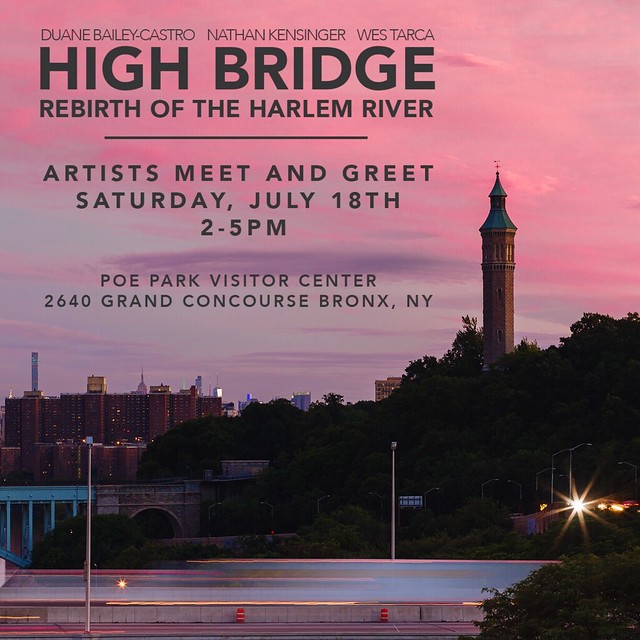Greenpoint Hospital: Nurses Residence
 October 27, 2010 -
October 27, 2010 -
The Greenpoint Hospital was built in 1914 and served North Brooklyn for more then six decades before closing in 1982. Located in East Williamsburg, the seven towers of this hospital campus are currently used as apartments, a homeless shelter, and a new community space. However, one building remains abandoned - the former nurses residence, which is at the center of a contentious 28-year-old neighborhood struggle. Inside this empty four-story complex are hundreds of tiny rooms, which once were used to house the homeless. On lower floors, a vanished community of squatters has left behind their belongings, including shoes, beds, and a VHS copy of "Runaway Bride." On upper floors, a huge colony of pigeons has taken roost. The air is thick with choking fumes from mountains of bird droppings.
When the Greenpoint Hospital was open, it provided emergency care for the surrounding community, including injured police officers. On February 3rd, 1971,"Frank Serpico's inert, blood soaked form was wheeled into the Emergency Room," according to "Serpico" by Peter Maas. Serpico, a NYC policeman, had been "shot in the face during a 1971 drug bust while screaming for backup from his fellow officers, who then failed to immediately call for an ambulance," according to the NY Times. Three month after his suspicious shooting, Serpico, a known whistle-blower, provided the key testimony in "New York's single largest police corruption case... [in] almost 20 years," according to the NY Times. His story was immortalized in a 1973 film starring Al Pacino that, according to the NY Times, "seared the public memory with painful images: of the honest cop bleeding in a squad car rushing to the hospital, where, over months of rehabilitation, he received cards telling him to rot in hell."
In 1981, the city closed the Greenpoint Hospital Methadone Clinic, which had been widely praised for combating the neighborhood's "growing heroin problem," according the NY Times. Soon after, the entire hospital complex was closed "due to financial struggle" and, to the surprise of residents in the area, "just five months after it was shuttered—the city began shuttling homeless men onto the premises in the middle of the night, creating a makeshift homeless shelter without community consent," according to a Greenpoint Gazette article titled "The Greenpoint Hospital Debacle."
The first homeless shelter was opened in 1983, according to the NY Times, with a capacity for 300 men. A second shelter for 100 men opened in 1985, according to the NY Times, "on the third and fourth floors of [the] former nurses residence." A list of shelter rules still hangs in the dining hall of the nurses residence, and includes entries like Rule #10 - "A resident shall not be restrained or locked in a room at any time." Eventually, the hospital campus "housed more than 1,200 homeless men, at which point the community decided it had had enough," according to The Greenpoint Gazette. "We were clearly overburdened,” one resident told the newspaper. “At first there were 40 men, then it escalated to 1,200. All we wanted was community control over the site, and the city wouldn’t give it to us."
In 1996, the NY Times reported that "for more than a decade, community groups have fought to get a nursing home built for Greenpoint's growing elderly population. But their efforts to build the home on the site of the old Greenpoint Hospital campus have competed with the city's need to house the homeless... Community residents have marched in the streets and even shut down the Brooklyn Queens Expressway in their attempts to persuade the city to reduce the shelter's population to 200 men to pave the way for their nursing home plan. Now the city has promised to find alternate shelter for the... homeless, clearing a key obstacle to the groups' plan."
More than a decade later, the nurses residence remains empty. The building and an unused lot in front of it are the key elements to the neighborhood's plan to build a nursing home. In April 2010, however, the city made the "controversial decision to award the site to two non-Brooklyn development companies," according to The Brooklyn Paper, despite a competitive bid from an alliance of neighborhood groups which had dedicated "25 years of advocacy for developing the site." In September 2010 the city upheld its support for awarding this $32 million project to an outside developer, according to The Brooklyn Paper, despite protests, appeals and a rally at City Hall that "delivered 3,000 signed letters" to Mayor Bloomberg asking him to reverse his decision, according to the Brooklyn Eagle. Currently, "The Greenpoint Renaissance Enterprise Corporation, a group of local nonprofits snubbed for the contract, is suing to overturn the decision," according to the NY Daily News.
At the developer's website, Great American Construction Corp, the Greenpoint Hospital is described as "the largest of the public sites committed to by the Bloomberg Administration as part of the Greenpoint-Williamsburg rezoning. The site... consists of a 59,600-square-foot vacant City-owned parcel and a vacant 4-story structure that formerly served as a nurses’ residence..." on which they plan to "build a total of 240 affordable units." There is no mention of a nursing home.
With the development of the Greenpoint Hospital site pending, these photos take a last look inside the abandoned interior of the Nurses Residence.


















































